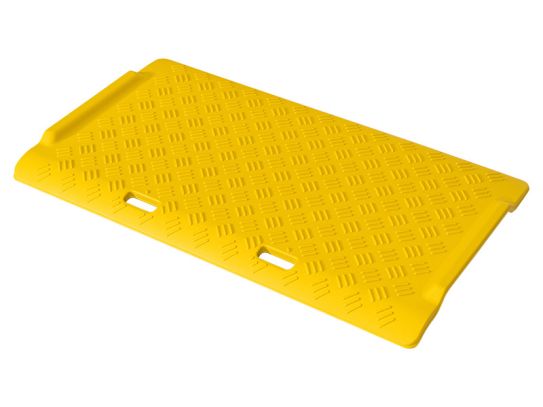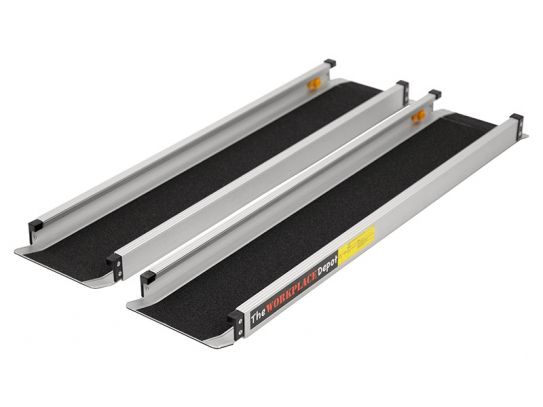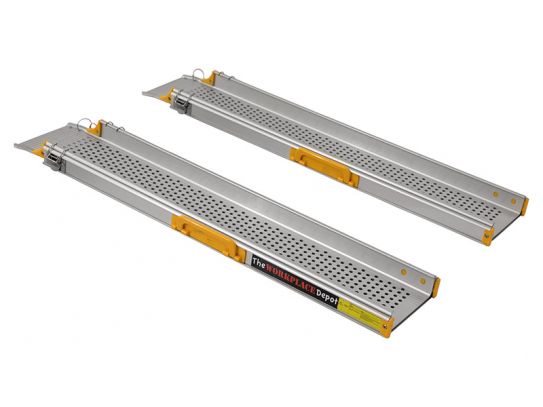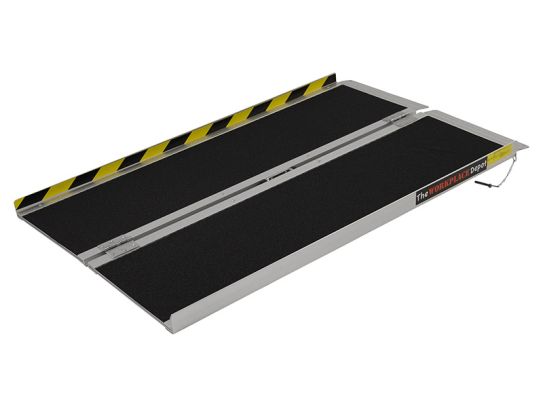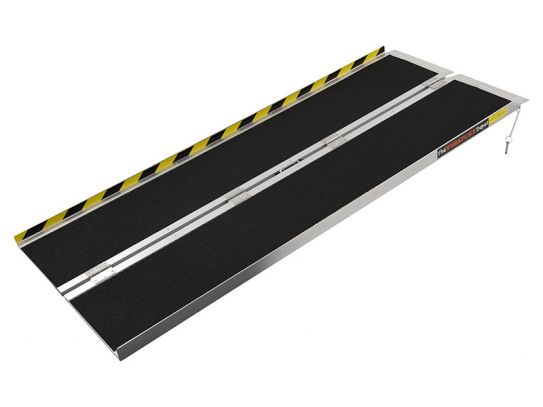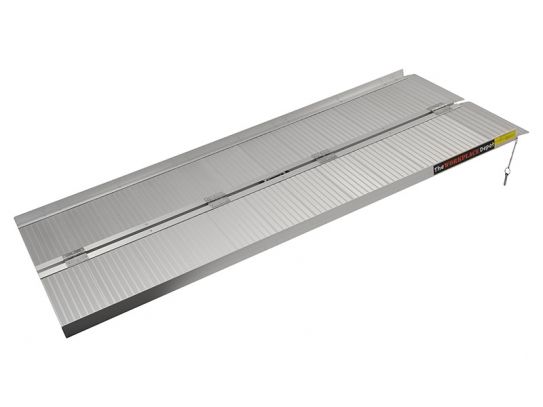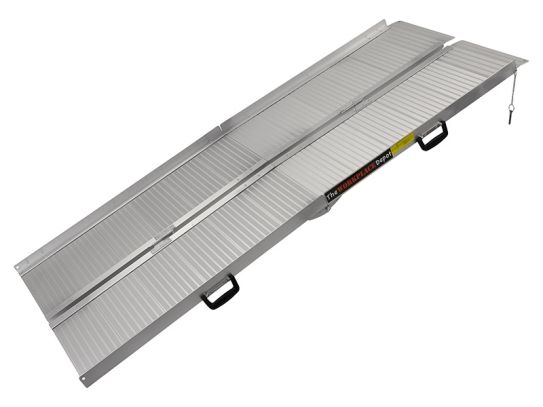Wheelchair Ramps
Safe And Easy Access For All
Our wheelchair ramps are designed with accessibility and safety in mind. Whether you're using a wheelchair, scooter, or other mobility device, our ramps make it easy for you to access your home or any other building. With a variety of designs to choose from and top-quality construction, our ramps are built to last and provide a stable, non-slip surface for safe and easy access. We also offer a range of customization options to ensure that our ramps meet your specific needs and preferences. From permanent ramps to portable and modular designs, we have a solution for every situation. Elevate your independence and break down barriers with our wheelchair ramps.
What Is A Wheelchair Ramp
A wheelchair ramp is a sloping surface that allows individuals using a wheelchair or other mobility device to easily access a building or other structure. Ramps are typically made of concrete, wood, or metal and have a non-slip surface to ensure safety. The slope of the ramp is important to consider, as it should be steep enough to be easily accessible, but not so steep that it becomes difficult to navigate. The length of the ramp will depend on the height of the structure being accessed and the slope of the ramp. Wheelchair ramps are an important accessibility feature that can help individuals with mobility impairments to live more independently.
What Are The Benefits Of Wheelchair Ramps?
There are several benefits to using a wheelchair ramp:
- Improved accessibility: Wheelchair ramps allow individuals using a wheelchair or other mobility device to easily access buildings, transportation, and other structures that may not be accessible otherwise. This can help to increase independence and improve quality of life.
- Safety: Wheelchair ramps can help to prevent accidents and injuries by providing a stable, non-slip surface for individuals using a mobility device.
- Convenience: Wheelchair ramps can be used to access a variety of different locations, including homes, schools, stores, and other public buildings. This can make it easier for individuals with mobility impairments to go about their daily lives.
- Cost-effective: Wheelchair ramps can be a cost-effective solution for improving accessibility, particularly when compared to the cost of building an elevator or installing a lift.
- Aesthetically pleasing: Wheelchair ramps can be designed to blend in with the surrounding environment and can be made from a variety of materials to suit the needs and preferences of the user.
Are Wheelchair Ramps Easy To Use?
The ease of use of a wheelchair ramp will depend on several factors, including the slope of the ramp, the length of the ramp, and the material used to construct the ramp. In general, ramps with a gentle slope and a non-slip surface are easier to use than ramps with a steep slope or a slippery surface. Ramps that are too long may also be difficult to use, as they may require a lot of effort to navigate.
To make a wheelchair ramp as easy to use as possible, it is important to ensure that the ramp is properly designed and constructed. This may involve consulting with a professional or following guidelines and recommendations for wheelchair ramp construction. It is also important to regularly maintain the ramp, ensuring that it is in good repair and free of hazards.
The ease of use of a wheelchair ramp will depend on the individual needs and abilities of the user. Some individuals may find certain ramps easier to use than others, depending on their specific mobility needs and preferences.
How Do You Install A Wheelchair Ramp?
Installing a wheelchair ramp requires careful planning and attention to detail to ensure that it is safe and functional. Here are some general steps to follow when installing a wheelchair ramp:
- Determine the location of the ramp: Consider the location and layout of the building or structure that the ramp will be used to access. Look for a location that is flat and has enough space for the ramp to be installed.
- Measure the height of the structure: Measure the height of the structure that the ramp will be used to access. This will help you determine the length and slope of the ramp that you will need to install.
- Choose a ramp design: Consider the needs and preferences of the user, as well as any local building codes and guidelines that may apply. There are several different types of ramps available, including permanent ramps, portable ramps, and modular ramps.
- Gather materials: Gather all of the materials that you will need for the installation, including any prefabricated ramp components, tools, and fasteners.
- Prepare the site: Clear the area where the ramp will be installed and level the ground if necessary.
- Install the ramp: Follow the instructions provided with the ramp kit or consult with a professional to assemble and install the ramp. Be sure to secure the ramp firmly in place and check for any hazards or deficiencies before use.
It is important to follow all safety guidelines and recommendations when installing a wheelchair ramp to ensure that it is safe and functional. If you are not comfortable or familiar with the installation process, it is recommended to consult with a professional or seek assistance from a qualified individual.
Are There Any Safety Issues Regarding Wheelchair Ramps?
There are several safety issues that should be considered when using a wheelchair ramp:
- Slope: The slope of the ramp should be gentle enough to be easily accessible, but not so steep that it becomes difficult to navigate. Ramps with a slope of 1:12 or less are generally considered safe and easy to use.
- Surface: The surface of the ramp should be non-slip and free of hazards, such as debris or cracks. Regular maintenance, such as sweeping or cleaning the ramp, can help to reduce the risk of accidents and injuries.
- Handrails: Handrails can help to provide additional stability and support for individuals using a wheelchair or other mobility device. It is important to ensure that handrails are properly installed and in good repair.
- Lighting: Poor lighting can make it difficult to see and navigate the ramp, increasing the risk of accidents and injuries. It is important to ensure that the ramp is well-lit, particularly if it is used at night or in low-light conditions.
- Maintenance: Regular maintenance, such as checking for and repairing any damage or hazards, is important to ensure the safety and functionality of the ramp.
By following these safety guidelines and regularly maintaining the ramp, you can help to reduce the risk of accidents and injuries when using a wheelchair ramp.
How Do I Maintain My Wheelchair Ramp?
Proper maintenance of a wheelchair ramp is important to ensure its safety and functionality. Here are some tips for maintaining your wheelchair ramp:
- Regularly inspect the ramp: Look for any signs of damage or wear, such as cracks, holes, or loose fasteners. Repair any damage or deficiencies promptly to prevent accidents and injuries.
- Keep the ramp clean: Remove any debris or obstacles from the ramp on a regular basis to ensure that it is clear and easy to use.
- Check the handrails: Make sure that the handrails are securely attached and in good repair. Repair or replace any handrails that are loose or damaged.
- Check the lighting: Poor lighting can make it difficult to see and navigate the ramp, increasing the risk of accidents and injuries. Make sure that the ramp is well-lit, particularly if it is used at night or in low-light conditions.
- Follow the manufacturer's guidelines: Consult the manufacturer's guidelines for specific maintenance recommendations and instructions.
By following these maintenance tips, you can help to ensure that your wheelchair ramp remains safe and functional for use.
Are There Any UK Or European Industry Standards That Apply To Wheelchair Ramps?
In the United Kingdom and Europe, there are several industry standards and regulations that apply to wheelchair ramps. These standards and regulations are intended to ensure the safety and accessibility of ramps for individuals using a wheelchair or other mobility device.
One of the main industry standards for wheelchair ramps in the UK and Europe is the Disability Discrimination Act (DDA) and the Equality Act (EA). These acts require that public buildings and facilities be accessible to individuals with disabilities, including those who use a wheelchair or other mobility device. This includes the requirement to install wheelchair ramps where necessary to provide access to the building or facility.
In addition to the DDA and EA, there are also specific guidelines and standards that apply to the design, construction, and use of wheelchair ramps. For example, in the UK, the British Standard (BS) 8300:2009 provides guidance on the design of buildings and their approaches to meet the needs of disabled people. This standard includes specific requirements for the design and construction of wheelchair ramps.
It is important to comply with all applicable industry standards and regulations when installing or using a wheelchair ramp to ensure that it is safe and accessible for individuals with disabilities.
